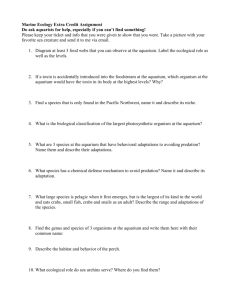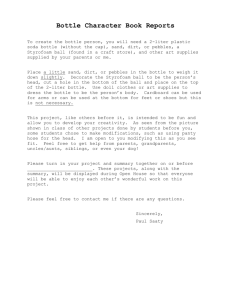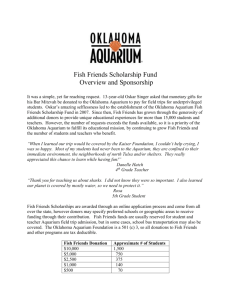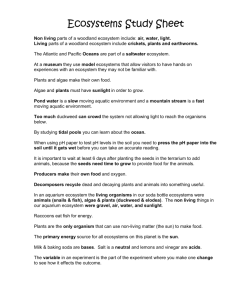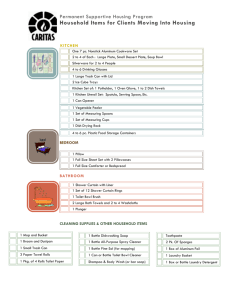Bottle Aquarium_Lab
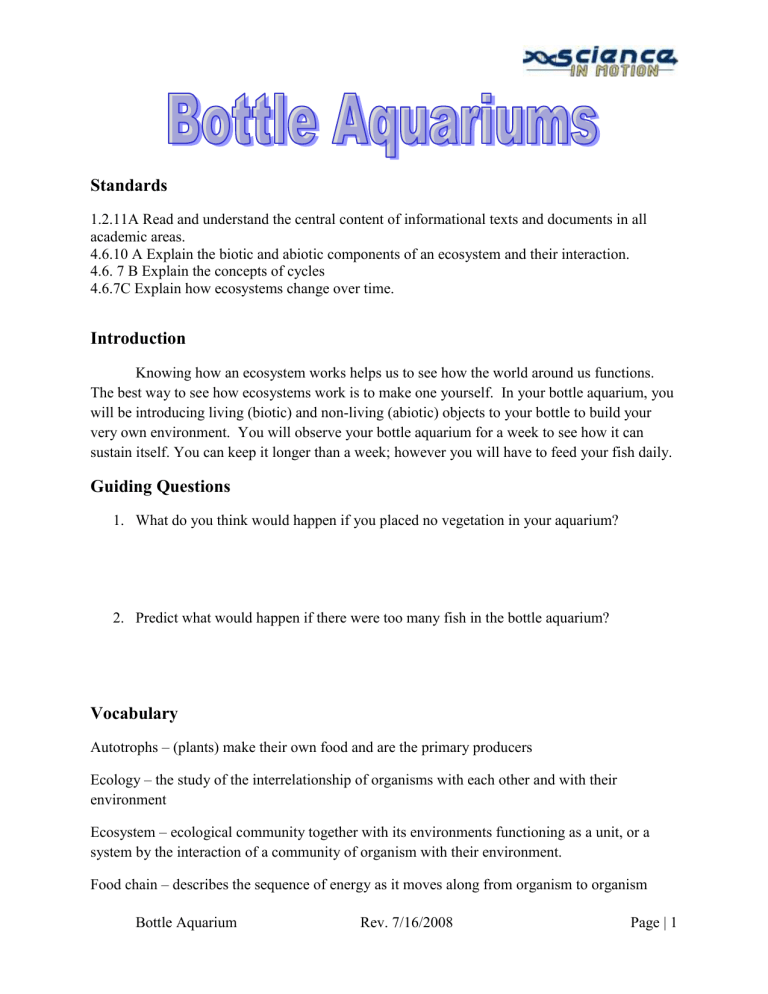
Standards
1.2.11A Read and understand the central content of informational texts and documents in all academic areas.
4.6.10 A Explain the biotic and abiotic components of an ecosystem and their interaction.
4.6. 7 B Explain the concepts of cycles
4.6.7C Explain how ecosystems change over time.
Introduction
Knowing how an ecosystem works helps us to see how the world around us functions.
The best way to see how ecosystems work is to make one yourself. In your bottle aquarium, you will be introducing living (biotic) and non-living (abiotic) objects to your bottle to build your very own environment. You will observe your bottle aquarium for a week to see how it can sustain itself. You can keep it longer than a week; however you will have to feed your fish daily.
Guiding Questions
1.
What do you think would happen if you placed no vegetation in your aquarium?
2.
Predict what would happen if there were too many fish in the bottle aquarium?
Vocabulary
Autotrophs – (plants) make their own food and are the primary producers
Ecology – the study of the interrelationship of organisms with each other and with their environment
Ecosystem – ecological community together with its environments functioning as a unit, or a system by the interaction of a community of organism with their environment.
Food chain – describes the sequence of energy as it moves along from organism to organism
Bottle Aquarium Rev. 7/16/2008 Page | 1
Juniata College
Food web – describes a number of overlapping food chains and is usually a more accurate description of feeding patterns in an ecosystem
Heterotrophs - must obtain their food from something else also known as primary and secondary consumers
Metabolite- A substance necessary for or taking part in a particular metabolic process. Examples of metabolites are glucose in the metabolism of sugars and starches, amino acids in the biosynthesis of proteins, and squalene in the biosynthesis of cholesterol.
Niche – role in the ecosystem that on organism plays relation to other organisms and to the environment
Trophic level – feeding level
Materials
Washed Gravel
2 Guppy Feeder Fish
1 Small water snail
Scissors or utility knives
Anacharis, Cabomba, or Hornwort Plants Two 2-Liter clear pop bottles
Aged for 24 hours, treated with chlorine neutralizer bottled spring water (optional)
Fish Flake food
DO NOT USE CHLORONATED WATER.
Safety
No safety concerns
Procedure
Bottle Preparation:
1.
Bottles should be rinsed clean until soft drink odor is no longer detected. Do not use soap.
2.
Remove the label from the bottle.
3.
Cut one bottle slightly above the curve of the neck so that the opening is slightly smaller than the second bottle. This will be the bottom of your aquarium.
4.
Cut the second bottle about four inches from the bottom. This will be your lid.
5.
Invert the lid bottle and cut holes in its top to allow for gas exchange.
6.
Wash aquarium gravel and cover the bottom of the bottle with about five centemeter of gravel.
Bottle Aquarium Rev. 7/16/2008 Page | 2
Juniata College
Adding the Livestock:
1.
Add aged, treated or spring water. DO NOT USE CHLORONATED WATER.
2.
Place the plant/s into the aquarium. It does not need to be rooted in the gravel.
3.
Add the snail and the two guppies. The male fish has color and the female fish is plain.
If there is a black dot on the stomach of the female, she is pregnant.
Bottle Care:
1.
Feed the fish two crushed flakes of food per day. DO NOT OVERFEED!
2.
Change 50% of the water every week.
3.
Keep the bottle aquarium out of direct sunlight. The plastic could heat the water to an undesirable temperature and promote algae growth.
Note: If a birth occurs in the aquarium, the younger fish (fry) should remain and the adults should be relocated to another bottle aquarium. The adults will mistake the fry for food.
Observations:
Data Table
Day 5
Water
Clarity
Amount of
Food Fed
Describe direct and indirect interactions between the organism
Questions
Day 1 Day 2 Day 3
1.
What are two purposes for placing the plants in the aquarium?
Day 4
2.
What gas will be produced by the fish?
Bottle Aquarium Rev. 7/16/2008 Page | 3
Juniata College
3.
What gas will be produced by the plants?
4.
Which organisms are producers? There will be more than one, although initially there may only appear to be one. You can come back and answer this question last. Hint:
Some are larger than others.
5.
Which organisms are consumers?
6.
What might happen if you feed the fish too much food (besides FAT fish)?
7.
What is the purpose of the snail?
8.
What does the snail eat?
9.
List two or more reasons why you need gravel in your aquarium.
10.
Why do you need holes in the lid of the bottle aquarium?
References
http://www.boquetriver.org/adoptaqecosys.html
Bottle Aquarium Rev. 7/16/2008 Page | 4
